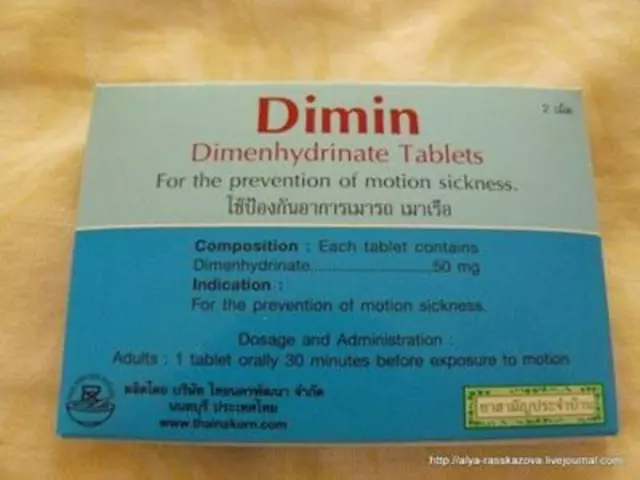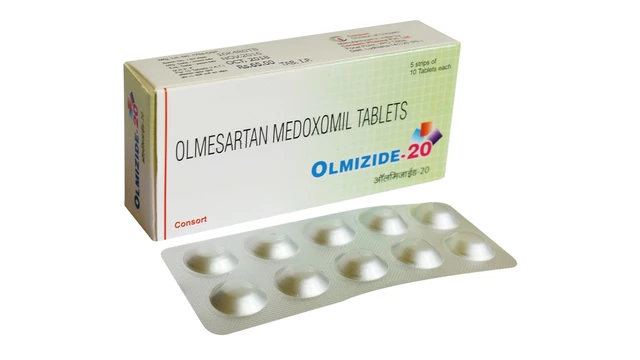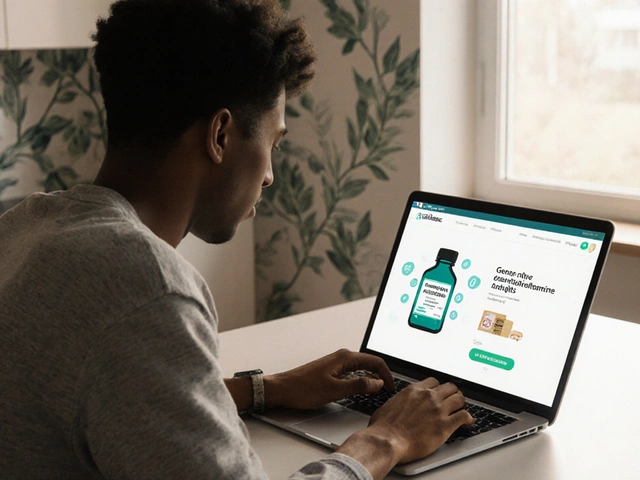Quick Takeaways
- Atenolol is a prescription beta‑blocker that does not show up on standard employment drug screens.
- Only highly specific confirmatory methods like LC‑MS/MS can detect it, and they are rarely used outside sports or forensic labs.
- Cross‑reactivity in immunoassay panels is extremely low, so false‑positive results are uncommon.
- Athletes who need atenolol can apply for a Therapeutic Use Exemption (TUE) to stay competition‑eligible.
- If you’re undergoing a mandatory test, disclose your prescription and keep documentation handy.
When you hear the word “drug test,” you probably picture a quick urine dip‑stick that looks for narcotics, THC, cocaine and a few other substances. But what happens if you’re taking a heart medication like Atenolol a selective beta‑adrenergic receptor antagonist used to treat high blood pressure and angina? This article unpacks the science, the testing technology, and the practical steps you can take to avoid surprises.
What is Atenolol?
Atenolol belongs to the Beta blocker a class of drugs that block the effects of adrenaline on beta‑adrenergic receptors, lowering heart rate and blood pressure. It’s taken orally, usually once or twice a day, and has a half‑life of about 6-7 hours in healthy adults. Because it’s water‑soluble, it’s eliminated mainly through the kidneys, which is why urine is the preferred matrix for laboratory analysis if the drug ever needs to be measured.
How Do Drug Tests Work?
Most workplace screens rely on immunoassay technology. A small urine sample is mixed with antibodies that bind to target molecules; a color change signals a positive result. If the screen is positive, the lab runs a confirmatory test-most often liquid chromatography‑tandem mass spectrometry (LC‑MS/MS an analytical technique that separates compounds by liquid chromatography and identifies them by mass spectrometry)-to verify the exact substance.
Immunoassays are cheap and fast, but they’re not perfectly specific. Some drugs can cross‑react with antibodies designed for another compound, leading to false positives. LC‑MS/MS, on the other hand, can differentiate molecules down to a few parts per billion, virtually eliminating cross‑reactivity.

Does Atenolol Show Up in Standard Drug Screens?
The short answer: Atenolol drug testing is not part of routine employment panels. The most common 5‑panel or 10‑panel screens target substances of abuse-amphetamines, cocaine, opiates, cannabinoids, PCP, and sometimes barbiturates or benzodiazepines. Beta‑blockers are deliberately excluded because they have legitimate medical uses and their presence does not indicate illegal activity.
Even when a lab runs an extended “prescription‑medication” panel, atenolol is rarely included unless the test is specifically ordered for forensic or anti‑doping purposes. In sports, the World Anti‑Doping Agency (WADA) lists beta‑blockers like atenolol as prohibited in certain disciplines (e.g., shooting, archery) because they can reduce tremors. For those cases, a targeted LC‑MS/MS analysis is performed.
When Can Atenolol Influence Test Results?
- Cross‑reactivity in immunoassays: Studies show the antibodies used for amphetamine or opioid screens have negligible affinity for atenolol, making false positives extremely rare.
- High‑dose pharmacokinetic studies: If a patient overdoses and atenolol concentrations in urine exceed 10 µg/mL, some ultra‑sensitive research assays might flag it, but this is far beyond therapeutic levels.
- Forensic toxicology: In death investigations, labs may look for a wide range of pharmaceuticals, including atenolol, using LC‑MS/MS. This is not a “drug test” in the employment sense.
In short, under normal prescription use, atenolol does not cause a positive result on a standard screen, and the chance of a false positive is close to zero.
Therapeutic Use Exemptions and Sports Doping
Because beta‑blockers can give a performance edge in precision sports, athletes must apply for a Therapeutic Use Exemption an official permission allowing the use of a prohibited medication when medically necessary. The process involves submitting a doctor's letter, dosage details, and supporting medical records to the governing body (e.g., WADA, national federations). Once approved, the athlete can compete without fear of a violation, provided the medication stays within the prescribed dose.
For non‑athletes, the concept of a TUE isn’t relevant, but keeping a copy of your prescription and a brief doctor’s note can protect you if an employer asks for clarification.

Practical Tips for Managing Medication During Testing
- Inform the testing administrator: At the start of any drug‑testing procedure, state that you are taking atenolol and provide a prescription label.
- Carry documentation: A signed note from your GP explaining the dosage, indication, and necessity can help resolve any questions.
- Know the testing window: Atenolol’s renal clearance means it is generally undetectable after 24‑48 hours in a standard immunoassay, but that window expands for LC‑MS/MS if a targeted test is ordered.
- Avoid self‑medicating: Do not adjust your dose without medical advice, as higher concentrations could theoretically appear in an extended panel.
- Consult a pharmacist: If you suspect a lab might be looking for beta‑blockers-common in sports or certain legal cases-ask whether a specific request has been made.
Following these steps keeps the process transparent and reduces the risk of misunderstandings.
Comparison of Common Drug‑Testing Methods
| Method | Typical Use | Detects Atenolol? | Detection Limit |
|---|---|---|---|
| Immunoassay (5‑panel) | Workplace pre‑employment | No | - |
| Immunoassay (expanded prescription panel) | Some clinical workplaces | Rarely (cross‑reactivity negligible) | ~10 µg/mL (research assay) |
| LC‑MS/MS (targeted) | Sports anti‑doping, forensic toxicology | Yes (when ordered) | 0.1 µg/mL |
| GC‑MS (gas chromatography‑MS) | Forensic investigations | Yes (with derivatization) | 0.5 µg/mL |
Frequently Asked Questions
Will a positive drug test affect my prescription for atenolol?
No. Standard screens do not look for atenolol, and even if a lab ran a specialized test, a therapeutic prescription is a valid medical reason. Provide the prescribing doctor's note if asked.
Can atenolol cause a false positive for stimulants?
Research shows beta‑blockers have almost no structural similarity to amphetamines or cocaine, so cross‑reactivity is extremely unlikely. False positives are more common with over‑the‑counter cold meds, not atenolol.
Do anti‑doping agencies test for atenolol routinely?
Only in sports where beta‑blockers could give an edge (e.g., shooting). In those cases, athletes must submit a Therapeutic Use Exemption; otherwise, a targeted LC‑MS/MS analysis will be performed.
How long does atenolol stay in urine?
Because atenolol is cleared mainly by the kidneys, trace amounts can be detected for up to 48 hours after a normal dose using highly sensitive methods. It disappears from typical immunoassays within 24 hours.
Should I stop taking atenolol before a job‑related drug test?
Never stop a prescribed medication without your doctor’s advice. Stopping suddenly can cause rebound hypertension. Instead, disclose the prescription and carry your medication label.











Bianca Larasati
24 Oct, 2025
Just finished reading the breakdown on atenolol and its invisibility in most drug screens-what a relief for anyone juggling heart meds and a new job! I love how the piece spells out the exact steps to take, especially the part about keeping that prescription label handy. It feels like a pep talk for the nervous, turning a scary process into a manageable checklist. Knowing that a standard 5‑panel test won’t even glance at beta‑blockers is pure gold. Thanks for the clarity; now I can walk into that testing room with confidence.
Corrine Johnson
5 Nov, 2025
Indeed, the omission of atenolol from routine panels is not a mere oversight; it is a deliberate exclusion, anchored in pharmacological logic and ethical jurisprudence. One must contemplate: if every therapeutic agent were flagged, the very purpose of occupational screening would dissolve into bureaucratic chaos. Hence, the authors wisely emphasize documentation-an act of self‑advocacy that transcends mere compliance. Moreover, the nuanced distinction between immunoassays and LC‑MS/MS underscores the layered architecture of modern toxicology. Ultimately, this knowledge empowers the informed citizen to navigate institutional mandates with poise.
Jennifer Stubbs
18 Nov, 2025
The data on detection limits is spot on; LC‑MS/MS can catch trace amounts down to 0.1 µg/mL, which is far beyond what a regular workplace test would ever request. It’s reassuring that the cross‑reactivity rates are practically zero, so false positives are not a concern for atenolol users. The article also correctly points out that only sports bodies like WADA specifically target beta‑blockers. Bottom line: stick to your prescription, keep the paperwork, and you’re good.
Abhinav B.
30 Nov, 2025
I think its cleer that most labs wont even think about checking for atenolol unless they are told to. In India we often see labs ask for a "prescription‑medication" panel, but even then beta‑blockers are left out. If you ever get a weird result, just show your doc note – they will clear it up fast. Dont stress, just follow the steps the article gave.
Abby W
12 Dec, 2025
Wow, this was super helpful! 😊 I’ve been nervous about my upcoming pre‑employment test because I’m on atenolol for a heart condition. Good to know I just need to flash the prescription label and maybe a short doctor note. The table with detection methods made everything crystal clear. I’ll definitely keep a copy of my med bottle in my bag from now on. Thanks for the peace of mind! 🙌
Lisa Woodcock
24 Dec, 2025
Glad you found it useful! It can feel overwhelming when you have to juggle health and job requirements, but the article really breaks it down in a friendly way. Keeping that little paper from your doctor is a small hassle for a big peace of mind. If anyone else is in the same boat, feel free to share your own tips-maybe a digital copy on your phone works too. Wishing you a smooth test experience!